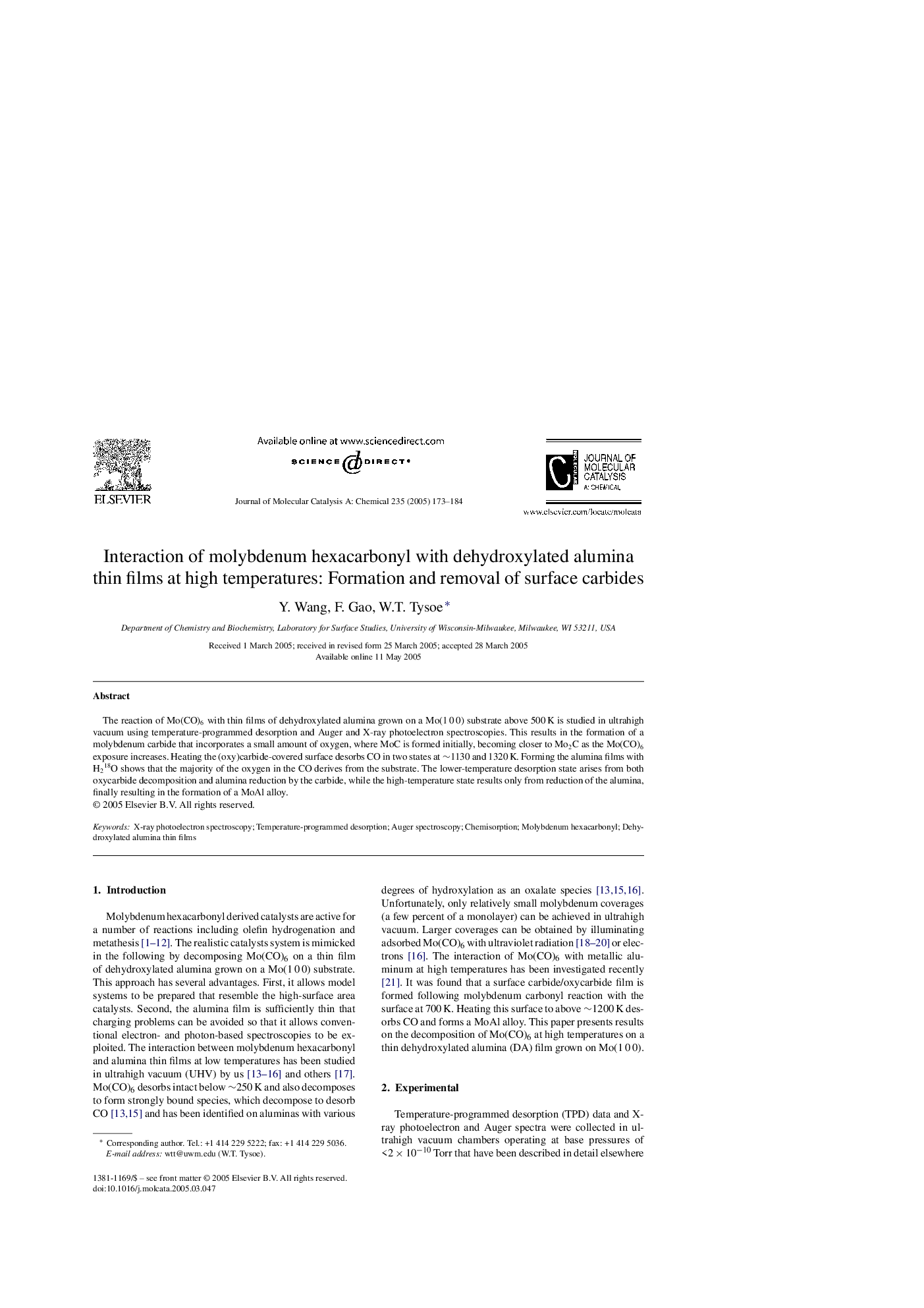| Article ID | Journal | Published Year | Pages | File Type |
|---|---|---|---|---|
| 9614656 | Journal of Molecular Catalysis A: Chemical | 2005 | 12 Pages |
Abstract
The reaction of Mo(CO)6 with thin films of dehydroxylated alumina grown on a Mo(1Â 0Â 0) substrate above 500Â K is studied in ultrahigh vacuum using temperature-programmed desorption and Auger and X-ray photoelectron spectroscopies. This results in the formation of a molybdenum carbide that incorporates a small amount of oxygen, where MoC is formed initially, becoming closer to Mo2C as the Mo(CO)6 exposure increases. Heating the (oxy)carbide-covered surface desorbs CO in two states at â¼1130 and 1320Â K. Forming the alumina films with H218O shows that the majority of the oxygen in the CO derives from the substrate. The lower-temperature desorption state arises from both oxycarbide decomposition and alumina reduction by the carbide, while the high-temperature state results only from reduction of the alumina, finally resulting in the formation of a MoAl alloy.
Keywords
Related Topics
Physical Sciences and Engineering
Chemical Engineering
Catalysis
Authors
Y. Wang, F. Gao, W.T. Tysoe,
